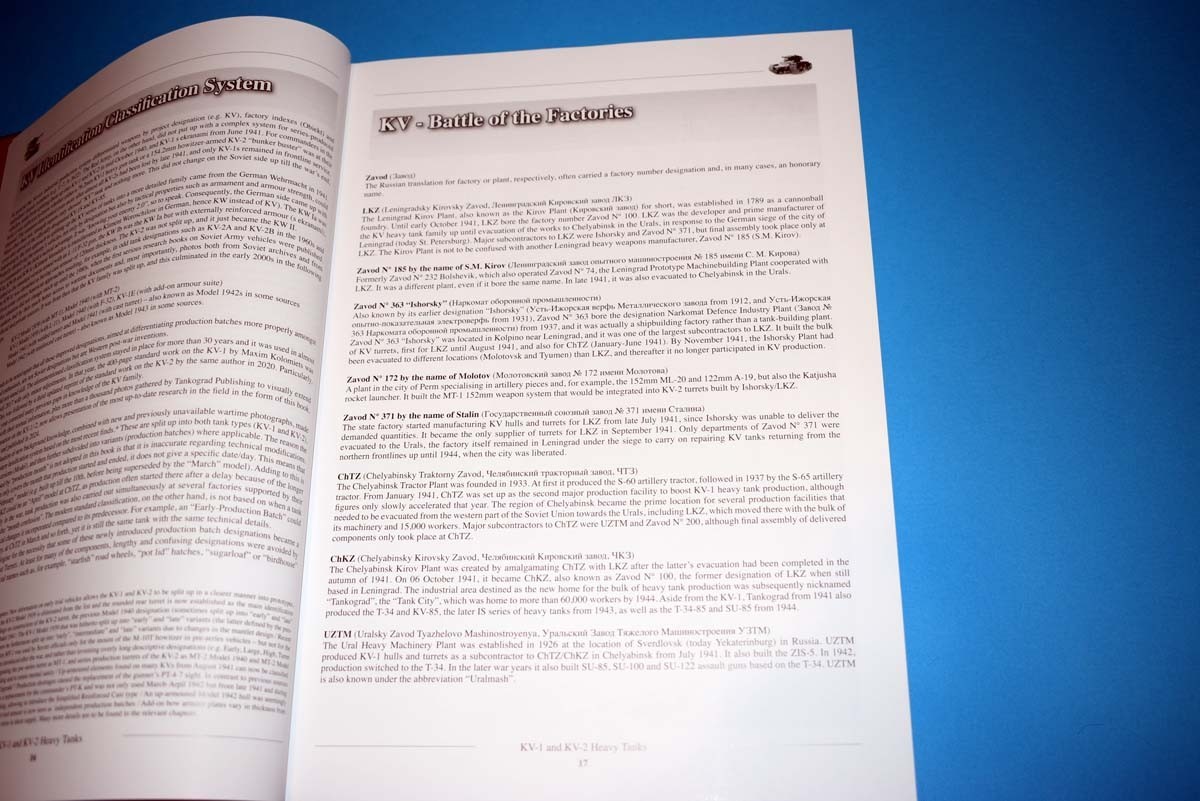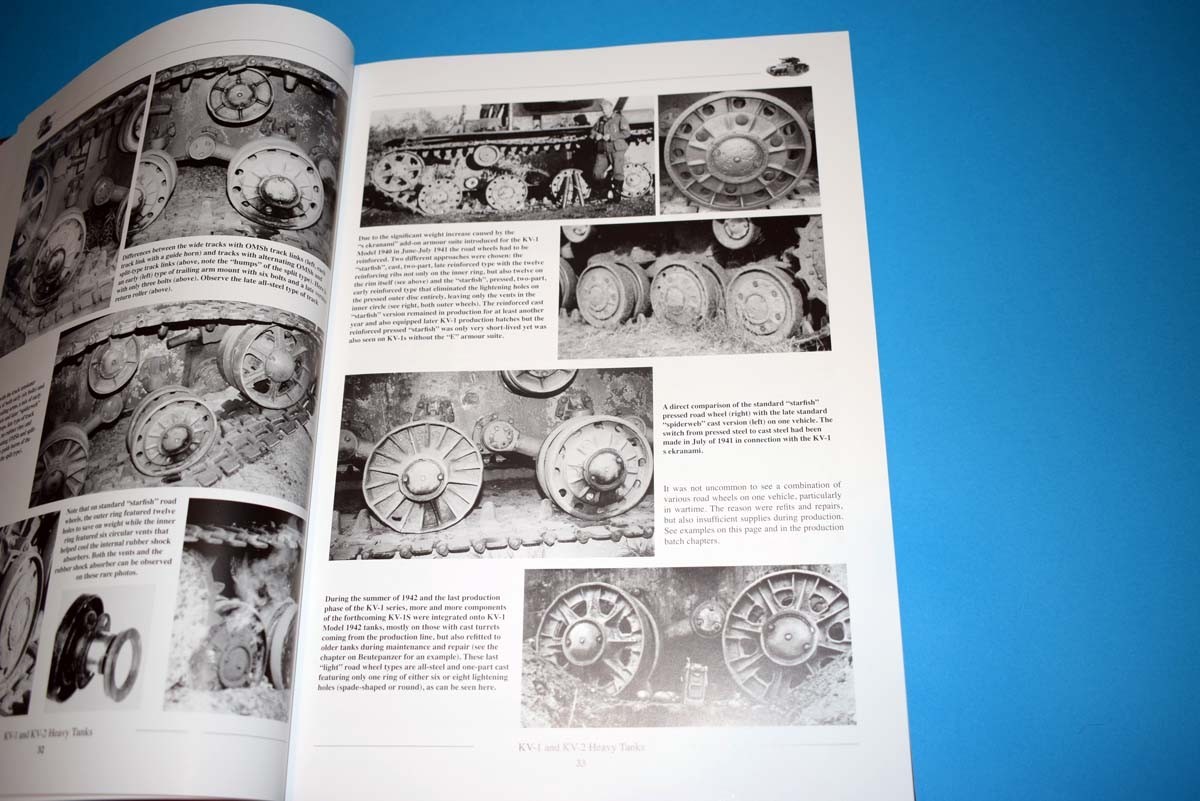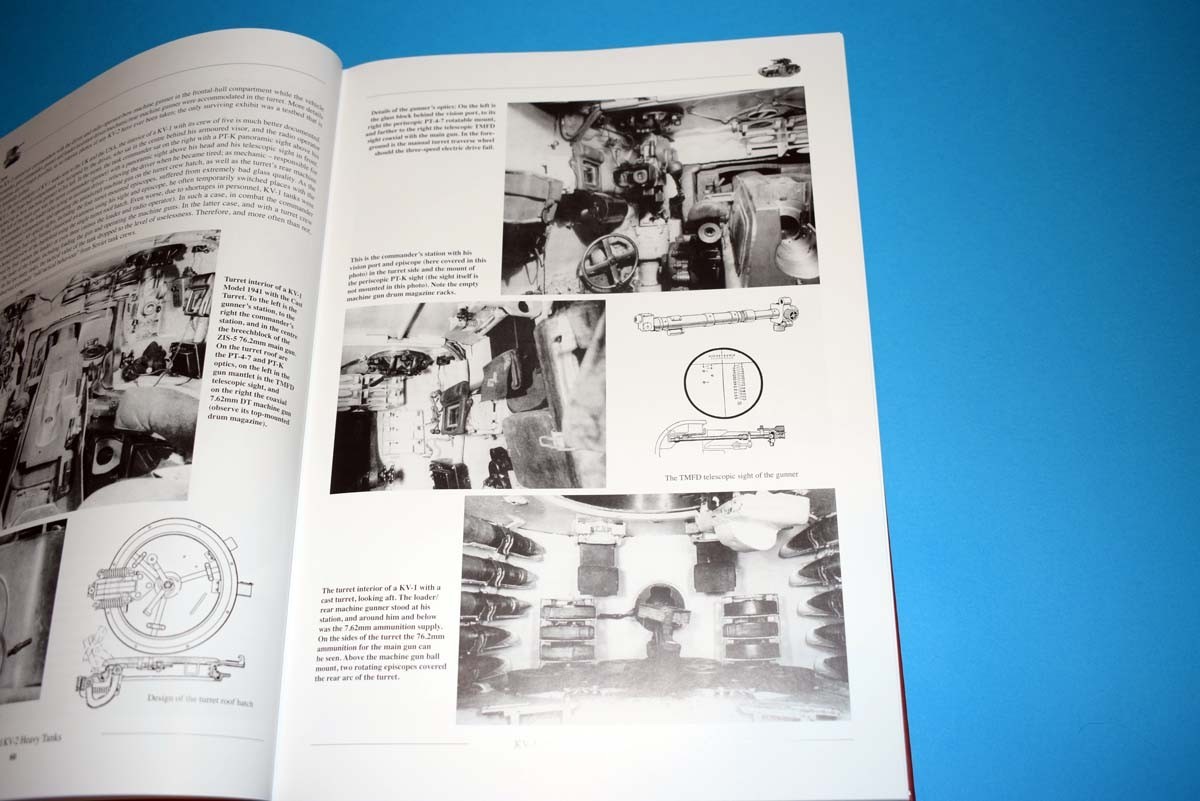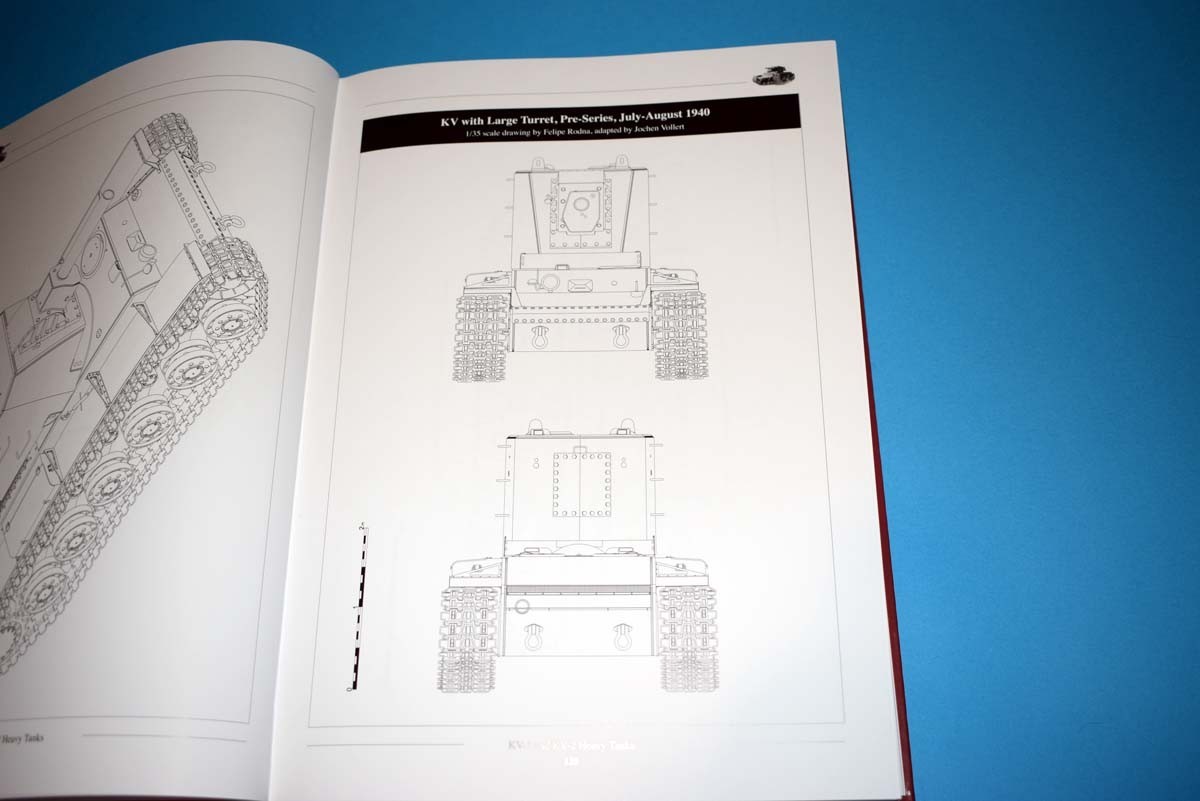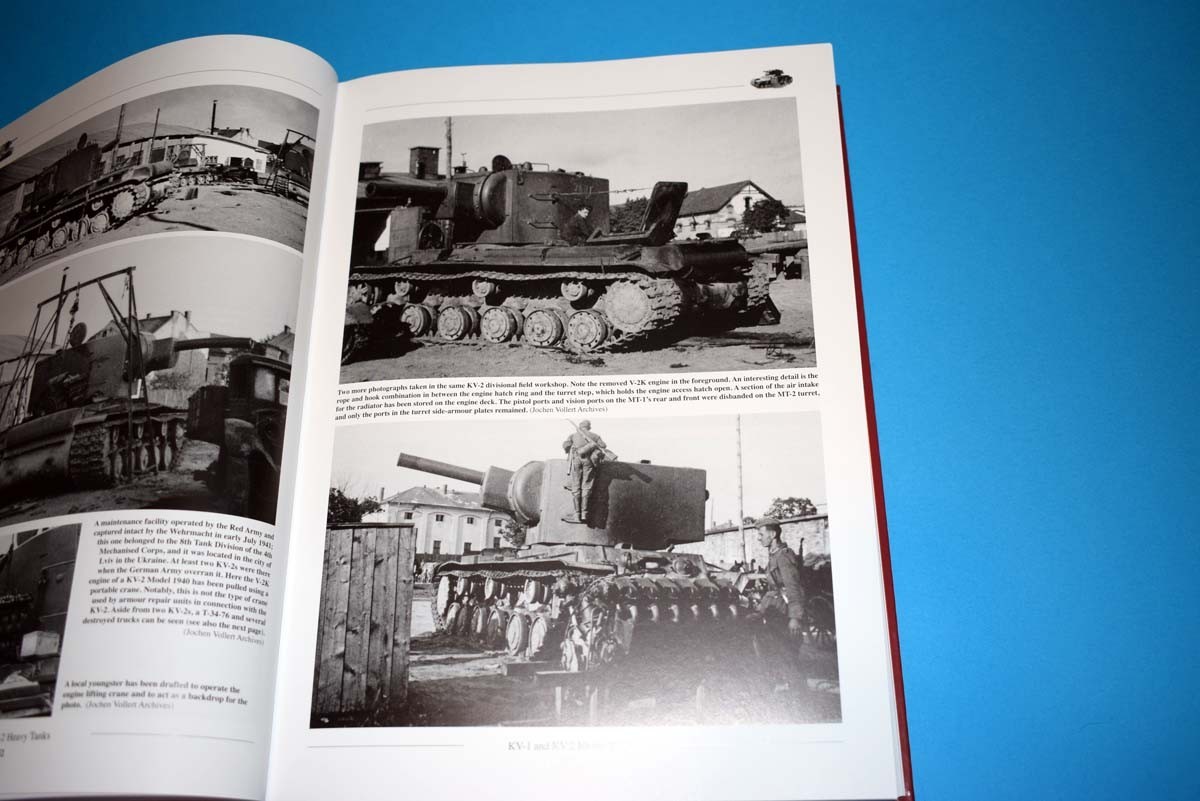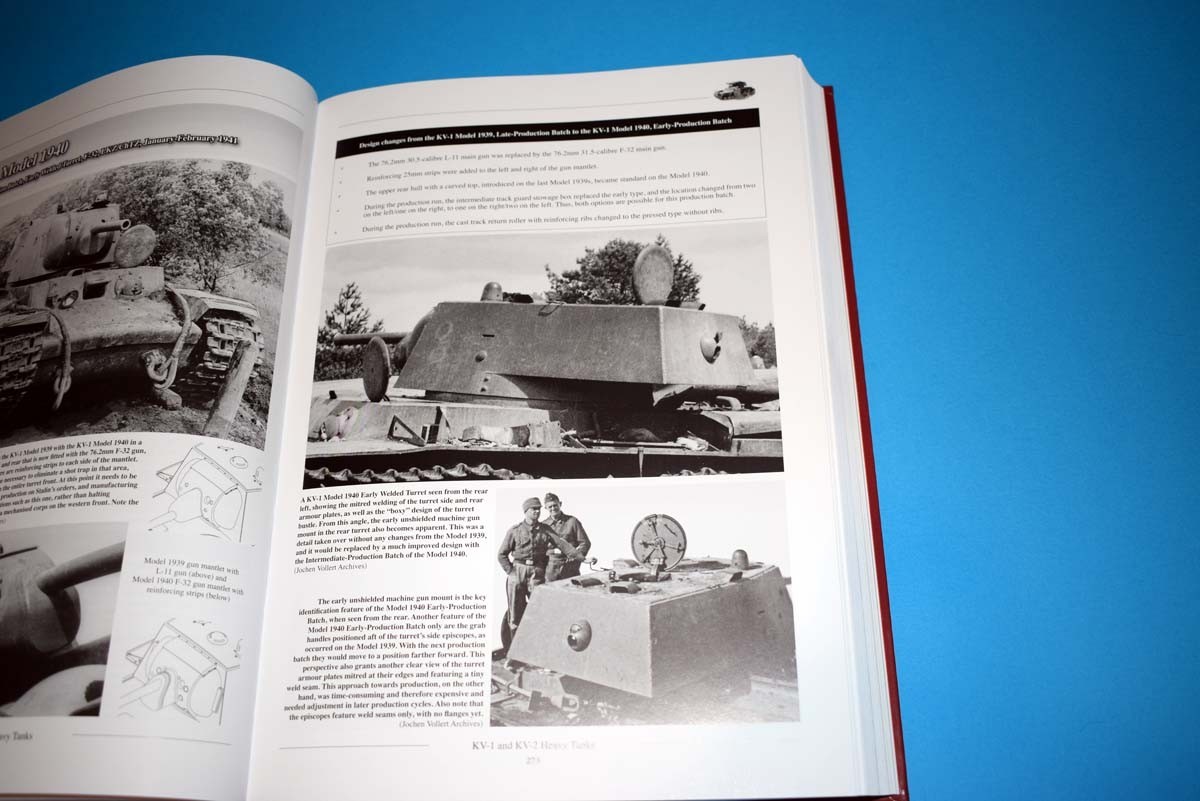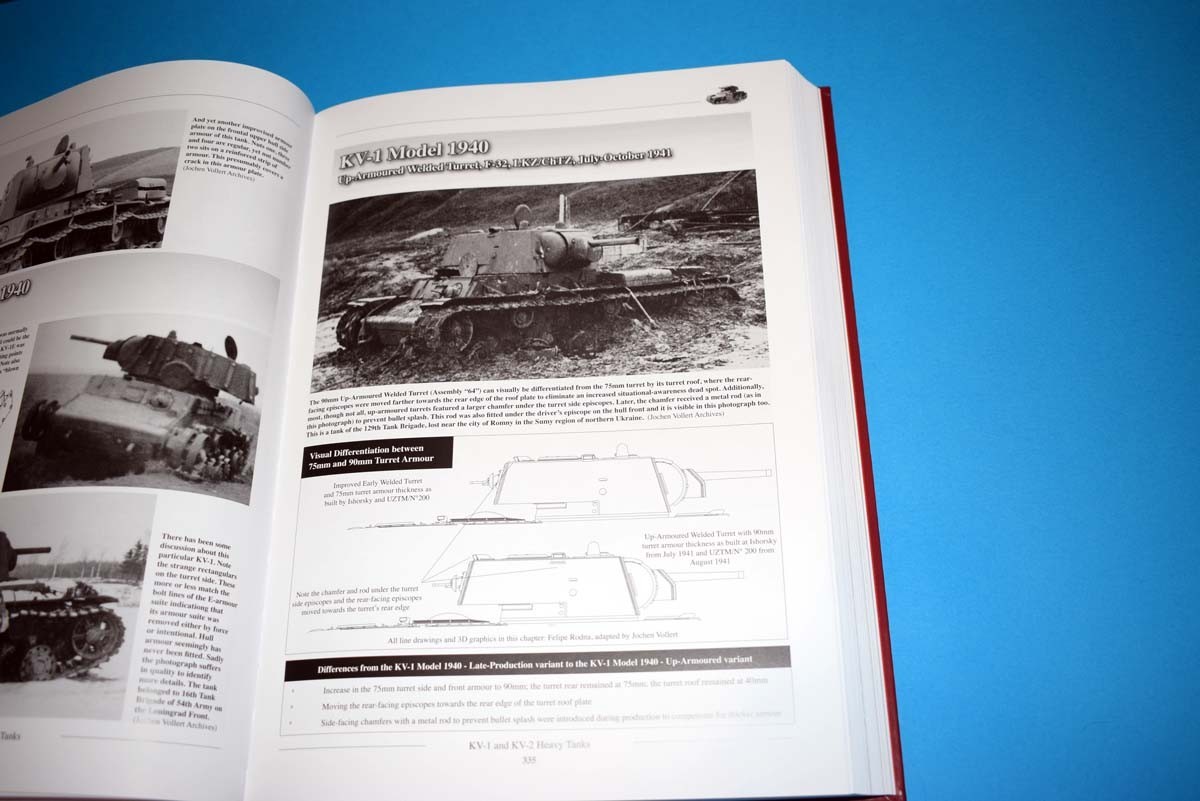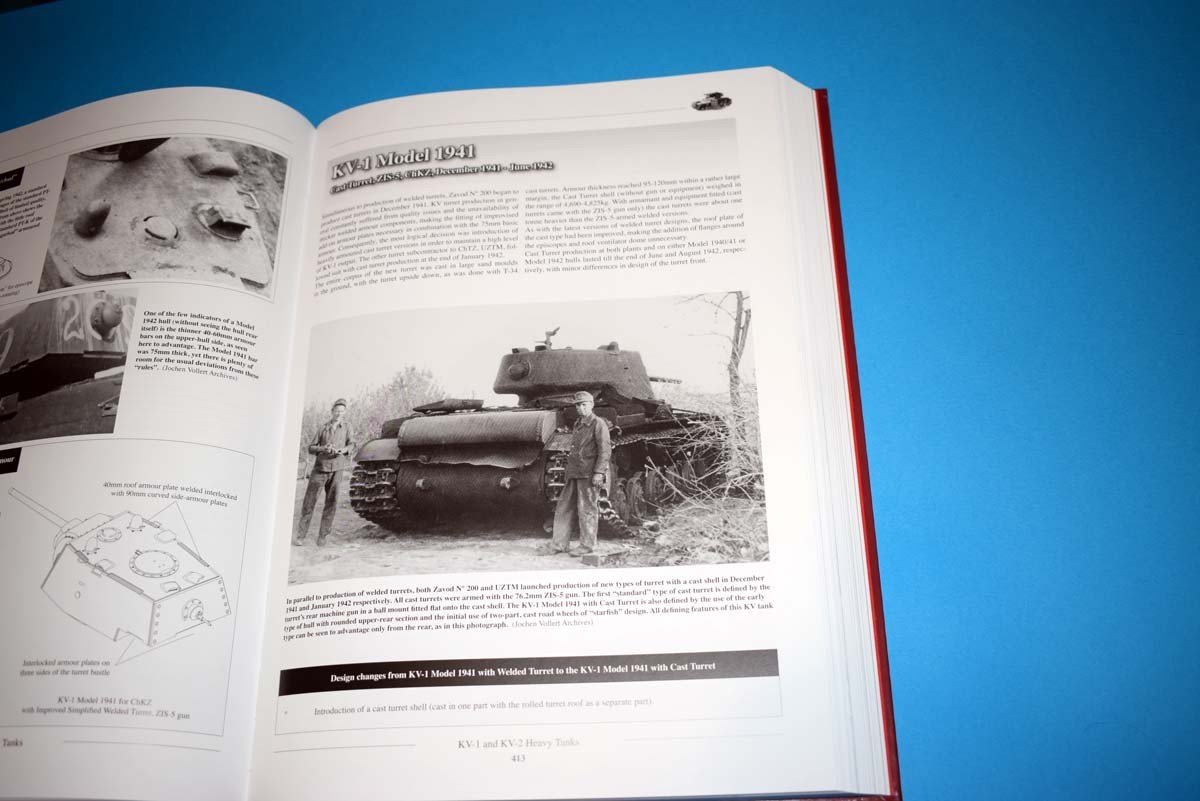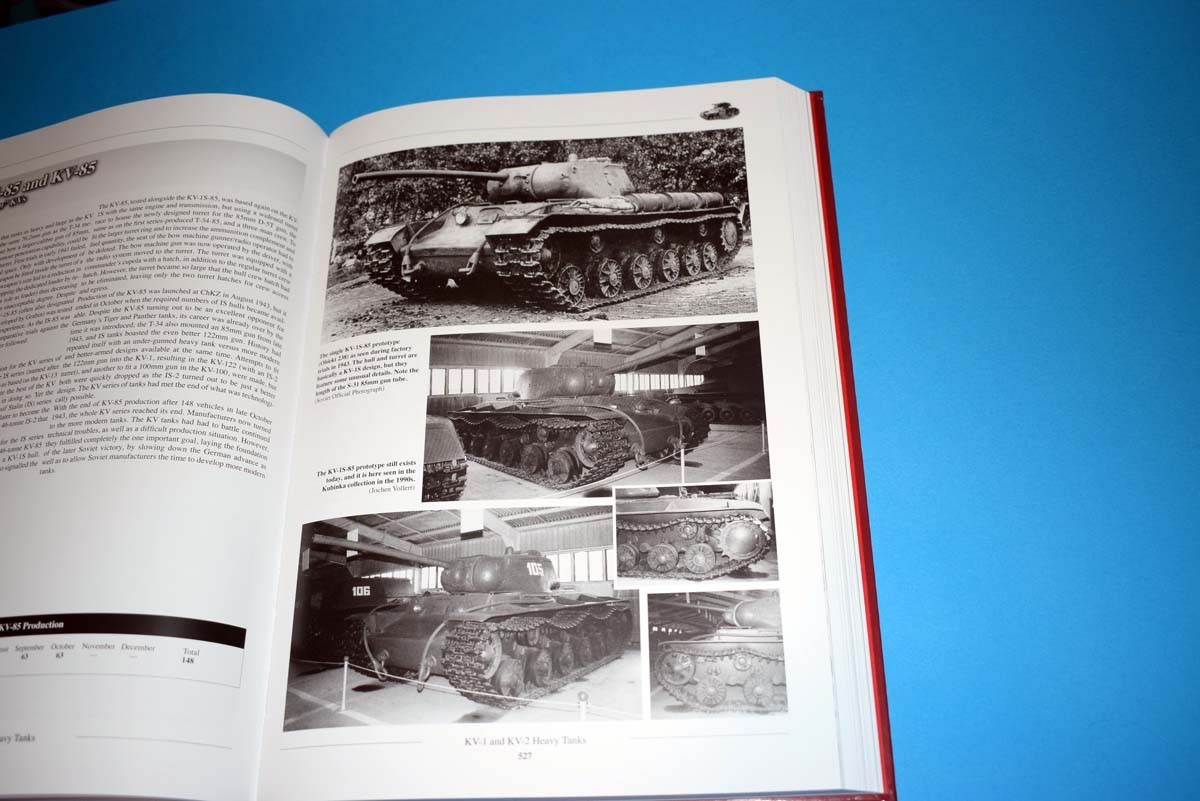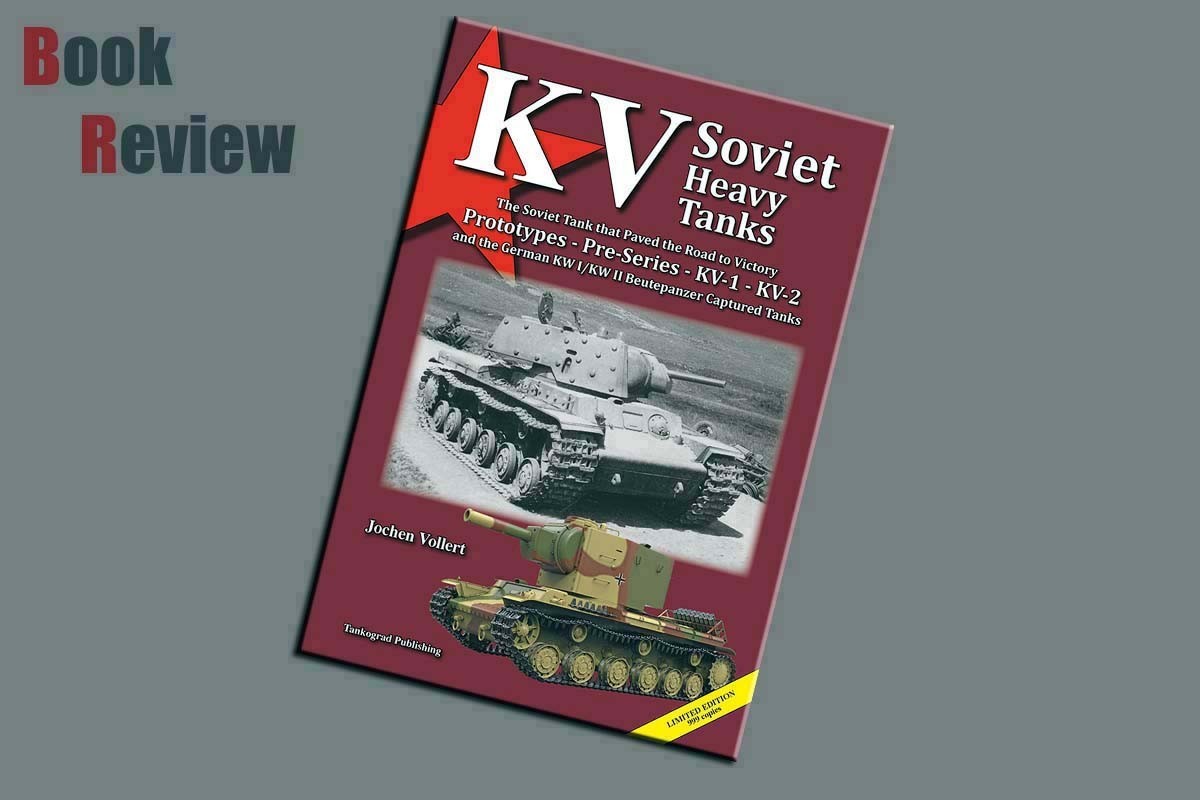
Introduction
This introduction is as supplied by Tankograd:
The Soviet Tank that Paved the Road to Victory
Prototypes – Pre-Series – KV-1 – KV-2
And the German KW I/KW II Beute panzer Captured Tanks
Previously, the Soviet KV (Kliment “Klim” Voroshilov) series of heavy tanks was described in many Western sources as being a slow and cumbersome sidekick to the T-34, and that it had only limited influence on combat during Operation Barbarossa, the German invasion of the Soviet Union in 1941. However, based on the most recent research, such a view can no longer be considered feasible today. Over recent years, the author has undertaken a completely updated and unbiased assessment of the KV and its true role on the battlefields of the Eastern Front. Analysing new findings, it can now be claimed with certainty that the KV’s legacy has been severely underestimated. Consequently, this book is the author’s fully updated and completely fresh take on a legendary Soviet tank design that came as a total surprise to its enemies, which slowed down the German advance under the most adverse circumstances and to such a degree that it laid the foundation for Soviet victory four years later.
The author goes as far as to say that the KV’s role on the Eastern Front of 1941 had, in many respects, similar tactical and emotive impacts on the enemy as the German Tiger tank did on the Western Allies in Normandy in 1944.
This comprehensive publication provides fully updated research on the KV family of tanks, development of its prototypes and pre-series vehicles, the series production batches and its deployment in combat, as well as correcting previously published mistakes. Many new findings are illustrated in astonishing hitherto unknown detail and include new variants that are shown for the very first time. An additional and extensive chapter also rewrites the story of KV tanks serving in the German Wehrmacht as KW Beute panzers.
In 728 pages, supported by 1,030 wartime photographs, 204 other black&white photographs, 345 2-D and 3-D graphics, as well as 18 1/35-scale 5-perspective line drawings plus 32 colour plates and graphics and 45 colour photographs, this is the first ever extensively visual coverage of a tank design that has lived far too long in the shadow of the T-34. The “Klim Voroshilov” tank family can now finally take its deserved place alongside the defenders of the Soviet motherland in 1941 and in world tank history.
Review
When this book was announced not so long back by Tankograd it was to a mixed reception. There are some who are only interested in the T-34s and the KV series of tanks are considered a side or old hat. It should, however, be considered that the KV family of tanks caused major headaches for German forces during Operation Barbarossa, As they caused major issues for the German forces. The German armour at this time was a mix of Panzer IIIs that were for tank combat. The Panzer IVs at that time were the short barrelled assault tanks and so neither was a match for the KV series of tanks. Even the anti-tank guns of the German forces at this time were pretty much useless in the face of a KV tank defending a position. The only weapon that was really a threat to the KV was the formidable German 88mm anti-aircraft gun, as these could engage the tank at a reasonable distance. However, it still meant that the gun needed to get set up and pray that the KV did not fire on it. Destruction of KV tanks during the early stages of the war tended to be from the 88 or due to the fact that they were disabled and run out of ammunition. Another negative that was raised is that other book releases had covered the KV as well as it could be. However, the author Jochen Vollert pointed out that a lot of information had come to light since the last publication of a decent book on the KV. He also pointed out that a good number of images and information contained within those titles had come for him originally.
The book itself is a hard backed book of a very good quality, and inside are 728 pages of a high gloss paper which is also of a very good quality. The contents in this title are comprehensive, with the chapters listed as:
KV Component Tracker
KV Predecessor, Development and Prototypes
KV with small Turret-KV-I Pre-series vehicles
KV with large Turret - KV-II Pre-series vehicles
KV-II Model 1940
KV-II Model 1941
KV-II Specialised Vehicle
KV-I Model 1939
KV-I Model 1940
KV-I Model 1941
KV-I Model 1942
KV-IS to KV-85
KV Flame Thrower Tanks
KV-I Specialised Vehicles
KV Tanks Through the German Gun Sights- Operation Barbarossa and Beyond
KV Beute Panzer - German Wehrmacht Service
KV-I Panzerkampfwagen K W Ia-753(r)
KV-I Panzerkampfwagen K W Ib-755(r)
KV-I Panzerkampfwagen K W Ic-756(r)
KV-2 Panzerkampfwagen K W II-754 (r)
KV-I - Beute Panzer Specialised Vehicles
KV-German Tank Models, Tank Dummies and Anti-tank measures
Addenda
KV in Colour
KV Further Reading
Despite Tankograd being a German publisher all the text within the title is provided in English, with the font being of a reasonable size and clarity for me to be able to read with my old eyes!! A review of this title, is hard to write as you need to keep it short enough for people to be interested, while still trying to do justice for what is on offer. The title itself is intended for people with a specific interest in this vehicle, and it is also a gold mine for the modeller generally who wishes to do a KV tank model justice. The contents cover the usual subjects of wheel types, track linkages and armour thickness. The wheels are also shown in detail on the vehicle itself and you are even given an introduction on how the tools are used to remove and add wheels to the vehicle, which will be a blessing for anyone considering a diorama in that vain. Moving on, every area of this vehicle right down to storage boxes is covered in great detail to specific vehicle types. There are some very nice interior shots of KV tanks that I have never seen before, and the details provided are easy to understand and are well presented.
The area where viewing ports are shown on the turret of various vehicles as you work your way through the title. Covers details of these items that I had never picked up previously. When it comes to completed tanks, one of the issues that has been encountered is that images tend to be from the perspective of a person stood near the vehicle and Tankograd has done an exceptional job of finding images of the tops of the turret which in the case of the KV 2 is a remarkable inclusion as the KV 2 was truly huge. I am sure that you will not be surprised to learn that the period photographic images provided are a mixture of factory shots, disabled vehicles and heavily damaged vehicles. One image of a KV 2 which is heavily destroyed shows the fate of many KV II Tanks where they were basically used as a roadblock, which while secure in the knowledge that they were safe from most aspects on the ground - they made great targets for German dive bombers which the armour was not up to protecting the vehicle against. Another aspect that is clearly shown in this title is the welding utilised in the construction, which is of a very high quality unlike the T34 tanks where a “That will do and is good enough” attitude tended to be the norm. The photographic quality of the images in this title are for the most part excellent, but you also need to consider that in the odd cases where they are not pinpoint sharp that options were limited as to what was available. Having worked my way through this title, I highly commend Tankograd for the images included, as some of them could have been taken yesterday even though they are black and white. Another very nice aspect of this title is that Tankograd has provided exceptionally well written captions for each of the pictures and in some cases series of pictures. An inclusion within this title that modellers will find particularly pleasing is 3D Oblique images for the various tanks are included alongside 1/35th scale drawings by Felipe Rodna (adapted by J Vollert). It is not made clear what these modifications are, and is the only aspect of the title where I feel to have been left guessing. These scale drawings offer the modeller a chance to compare model parts to the scale drawings to check for accuracy. Another beauty of this title for the modeller, is that I myself purchased all of the KV series of models released by Trumpeter, and to give you an idea about how long ago this was they cost about £10 each - and that was the shop price and I believed that this covered most of the vehicles that were in use by the Soviets during WWII. However, this title makes it very clear that there are a number of alterations that could be made to filling gaps in my line up.
The section showing the KV tanks in colour photography are a mixture of period, and display vehicles. I was particularly interested in the period colour photographs as I cannot recall having seen any previously and so they hold great appeal to me personally. Another aspect covered in the book is why so many tanks have no insignia on them and that is because all details as regards unit and country marking were ordered removed which would explain why some models are described as unknown. Towards the end of the title a good number of side profile colourised drawings are included which will make the Finnish options a very colourful prospect. Something that I had not learnt until this title, is the KV tank that is sometimes on display at Bovington Tank Museum is that it is the most accurate surviving KV tank today. It’s condition is by far the best and externally the finish is as provided with the only exception being the clipped corners of the driver’s armoured plate, which is a non-series production detail seen on the vehicle. I will close the review section by thanking Tankograd for listing further reading on the KV tank and they have listed books that have NOT been published by themselves which is something I appreciate. However, as a modeller I will be very surprised to find any book on the tank that is in publication that is not covered in this title.
Conclusion
To get the elephant in the room covered first, this is not a cheap title to purchase with a publisher’s price tag of €169 and of course that price is only likely to be higher in your own national currency depending on how far away from Germany this book has had to travel because it is a heavy tome - that you know is on your lap. The review that I have written obviously looks at the title as a whole, where as you may be looking for specific details on a specific vehicle type. Tankograd has aided you in this prospect due to a large number of chapters which are broken down into a large number of sub titles that will help you find what you are looking for quickly and easily. There is nothing in the book which I discarded as pointless, as everything provided held information that you may or may not know. It’s appeal will be to any modeller with an interest in Soviet WWII armour and that also goes for the person who is looking at it from a historical aspect and so being limited to 999 copies despite the high price I expect it to sell out fairly quickly. If you are at all concerned about the value of this offering all I can say is it is a typical Tankograd offering using only the very best presentation style. I will close by saying a great book by a great publisher.
